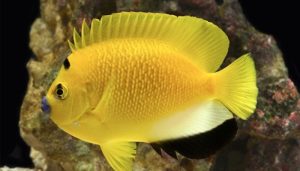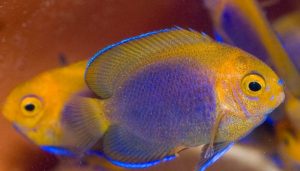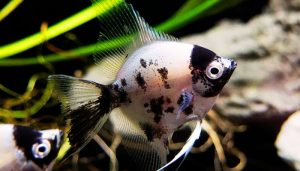Can mollies and guppies breed? Hybrid fish facts explained. If you’ve ever wondered whether these popular aquarium fish can crossbreed, you’re not alone. What happens when two closely related species share the same tank?
Yes, mollies and guppies can interbreed, producing hybrid offspring known as “muppies”. However, these guppy and molly hybrids are rare and often infertile.
This article will explore the genetics, viability, and care requirements of these unique fish.
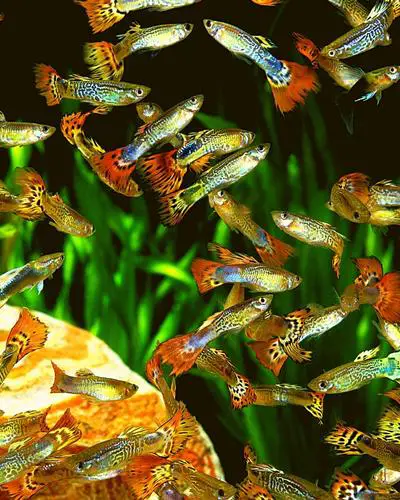
But is hybrid breeding a good idea for your tank? Experts like Dr. Paul Loiselle, a renowned ichthyologist, weigh in on the risks and benefits. Let’s dive into the fascinating world of hybrid mollies and guppies!
Table of Contents
ToggleIntroduction to Mollies: The Versatile and Popular Freshwater Fish
Mollies, scientifically known as Poecilia, are versatile freshwater fish that are a favorite among aquarists. They come in various types, including the common molly and the sailfin molly, and are recognized for their peaceful temperament and adaptability to different water conditions.
As livebearers, female mollies give birth to live young, making them an exciting addition to any aquarium. Their varied diet includes flake food, brine shrimp, and live or frozen options, ensuring they remain healthy and vibrant.
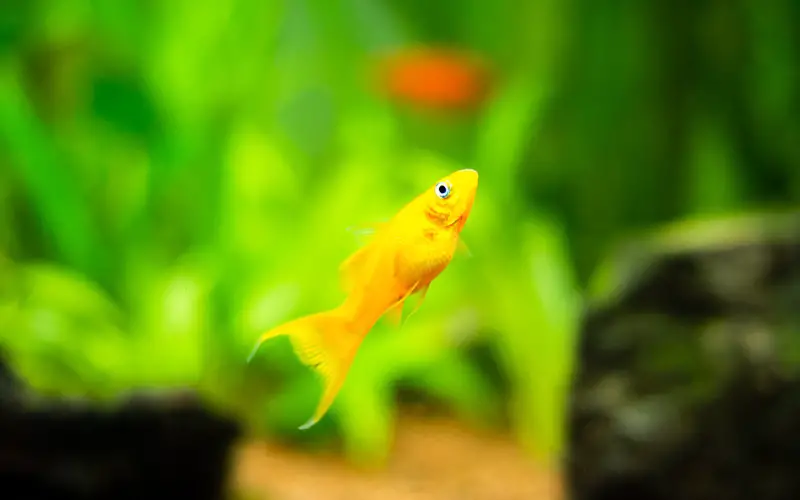
With their striking appearance, mollies can add a dynamic touch to a community tank, swimming around gracefully and interacting with tank mates like guppies, platys, and even goldfish.
Mollies are often chosen for their hardiness, which makes them suitable for both novice and experienced aquarists. They thrive in slightly alkaline water, with a temperature range that is ideal for tropical fish. In a well-maintained aquarium, these fish can flourish, showcasing their beauty and vivacity.
Their sociable nature encourages them to be part of a group, so keeping a small school of mollies can enhance their swimming behavior and overall wellbeing. When selecting mollies for your tank, it’s important to consider the various color variants available, such as the dalmatian molly, which is particularly striking.
The Joy and Responsibility of Keeping Mollies
Keeping mollies is a joyful experience, but it also comes with the responsibility of ensuring their health and happiness. These omnivorous fish require a balanced diet to meet their nutritional needs, which can include both plant-based and protein-rich foods.
Regular feeding routines, ideally using tropical fish flakes along with live foods, will support their growth and well-being. Additionally, maintaining optimal water quality is crucial, as mollies are sensitive to poor conditions that can lead to stress and illness.
To truly enjoy keeping mollies, aquarists must also be vigilant about water changes and tank maintenance. Regularly monitoring water parameters, such as pH and temperature, will create a stable environment. Keeping the water clean helps prevent diseases and promotes a thriving aquarium life.
With proper care, mollies can live healthily for several years, providing endless enjoyment as they swim and interact within their habitat. This responsibility not only enhances the experience for the aquarist but ensures that the mollies lead fulfilling lives.
Keeping Guppies and Mollies in Aquariums
When it comes to keeping Mollies and Guppies in the same aquarium, it’s essential to create an environment that caters to both species. Guppies and mollies are generally peaceful fish, which can coexist harmoniously in a community tank.
However, monitoring the dynamics between them is key, as male guppies can sometimes display aggressive mating behavior towards female mollies. Setting up a tank with plenty of space and hiding spots, such as live plants, can help minimize stress among tank mates.
Moreover, ensuring that the tank is adequately stocked is vital for stability. A minimum tank size of 20 gallons is recommended to provide ample swimming space and reduce territorial disputes. Additionally, keeping a balanced ratio of males to females will help maintain harmony.
Mollies and Guppies both appreciate a varied diet, so offering a mix of flake food and live or frozen foods will keep them healthy. Observing their interactions can be rewarding, as these lively fish exhibit engaging behaviors, further enriching the aquarium experience.
What Are Their Ideal Conditions?
Creating the ideal conditions for both mollies and guppies is essential for their health and happiness. Both species thrive in freshwater environments, although some molly varieties can adapt to brackish conditions.
For optimal growth, it’s crucial to maintain slightly alkaline water with a pH range of 7.5 to 8.5. Additionally, water temperature should be kept between 75°F and 82°F, ensuring a comfortable habitat for these tropical fish.
Regular water quality checks and changes are important for maintaining these parameters. Keeping the water clean and free of toxins will help prevent stress and promote a healthy aquarium environment.
Additionally, providing a well-filtered tank will facilitate better water circulation and quality. By paying close attention to these factors, aquarists can create a thriving ecosystem that supports the needs of both Mollies and Guppies, allowing them to flourish and enjoy a vibrant life within the aquarium.
Setting Up the Perfect Tank
Setting up the perfect tank for your mollies and guppies involves more than just filling it with water. It’s vital to create an environment that mimics their natural habitat, which means incorporating elements like live plants and hiding spots.
These not only enhance the aesthetic appeal of your aquarium but also provide security for the fish, especially for fry that are vulnerable to being eaten by adult fish. Using a substrate that provides a natural feel, along with decorations that allow for exploration, can stimulate healthy behaviors.
Additionally, proper filtration is a critical component of tank setup. A good filter helps maintain water quality by removing debris and toxins while promoting beneficial bacteria growth. It’s advisable to choose a filter suitable for the size of your tank and to ensure that water flow is gentle enough for these peaceful fish.
Regular maintenance, including water changes and monitoring for alga growth, will keep the tank environment stable. By thoughtfully designing your aquarium, you can create a sanctuary where both mollies and guppies can thrive.
Breeding Mollies and Guppies
Breeding mollies and guppies can be an exciting endeavor for aquarists, as both species are livebearers that give birth to live young. To successfully breed them, it’s essential to provide optimal conditions, including a separate breeding tank or designated area in the main tank.
Female mollies and guppies can become pregnant if they are kept with males, so it’s important to monitor their interactions. Once pregnant, female mollies typically carry the fry for about four to six weeks before giving birth.
During this time, providing a safe space for the fry to hide from adult fish is crucial, as adult mollies and guppies may eat the young ones. Using breeding boxes or densely planted areas can help protect the fry until they grow larger.
Feeding the fry with appropriate food, such as finely crushed flake food or specialized fry food, is essential for their development. With proper care and attention, breeding mollies and guppies can lead to a thriving population of young fish, adding excitement to the aquarium experience.
Social Behaviour and Compatible Tank Mates
Mollies and guppies exhibit fascinating social behaviors that can enrich any aquarium environment. Both species are generally peaceful, making them suitable companions for a community tank.
They often swim together, showcasing their vibrant colors and playful interactions. However, it is essential to ensure that their tank mates are compatible, as some aggressive fish can stress these peaceful fish. Tetras and platys are excellent choices for tank mates, as they share similar water requirements and temperaments.
Additionally, keeping a balanced ratio of males to females is essential to minimize aggressive mating behavior. Male mollies may display territorial behavior, especially during mating seasons, so providing plenty of space and hiding spots can help reduce conflict among tank mates.
Regular observation of their behavior can provide insights into their social dynamics, allowing aquarists to make necessary adjustments. By fostering a harmonious environment and selecting appropriate tank mates, you can create a thriving community tank where mollies and guppies coexist peacefully.
Commonly Asked Questions about Keeping Guppies and Mollies Together (FAQs)
Can molly and guppy breed?
Yes, mollies and guppies can breed together. They belong to the same family, Poeciliidae, which allows them to crossbreed. However, the guppy and molly hybrid offspring, often called “muppies” or “gollies,” are rare and usually infertile.
Can guppies and mollies breed?
Guppies and mollies can breed. Since they belong to the same family, Poeciliidae, they can produce hybrid offspring known as “muppies” or “gollies.” However, these hybrids are uncommon and often infertile.
Can molly and guppy live together?
Mollies and guppies can live together as they have similar water conditions and temperaments. Ensure a spacious tank, stable water parameters, and minimal aggression for a peaceful cohabitation.
Conclusion
In conclusion, while mollies and guppies are both popular choices for freshwater aquariums, their breeding potential remains a topic of interest. Although they are closely related, hybridization between the two species is not common. However, with proper care and attention, both mollies and guppies can thrive in a well-maintained aquarium. Providing the right conditions, including dietary needs, water quality, and ideal tank setup, is crucial for their health. By understanding their behaviors and social dynamics, aquarists can create a vibrant community tank that celebrates the beauty of these livebearers. Ultimately, the joy of keeping mollies and guppies lies not only in their care but also in the rewarding experience of observing their interactions and breeding behaviors.
You might also like
- How Many Mollies Can You Keep in a 10-Gallon Tank? (Solved)
- Mollies Fish Tank Mates: 9 Peaceful Companions List (Proven)
- Can Mollies Go with Bettas? A Complete (Beginner’s Guide)
- 15 Most Popular Molly Fish Types to Choose from (Guide)
- How Many Dalmation Mollies in a 10 Gallon Tank? (Solved)
- Can Dalmation Mollies Live with Bettas together? (Explained)
- Can Guppies Live with Mollies Peacefully: (Expert Advice)


